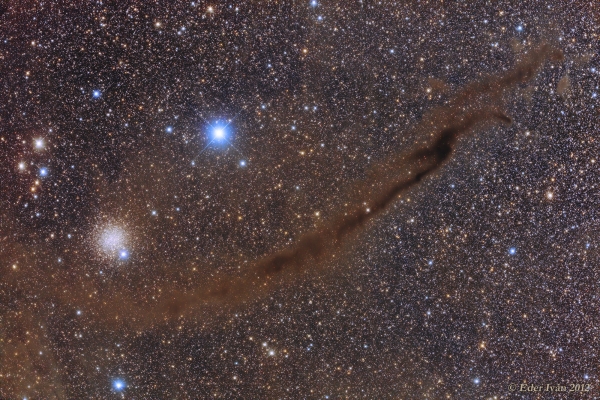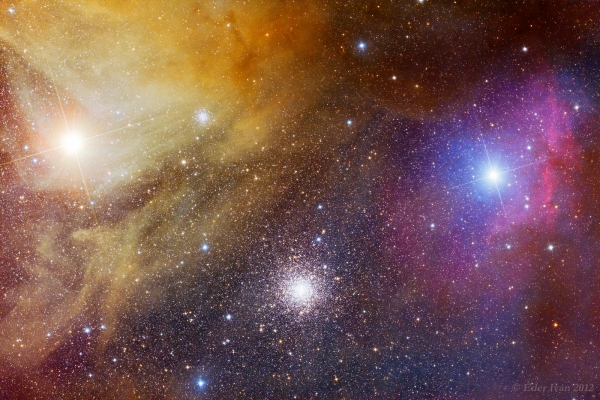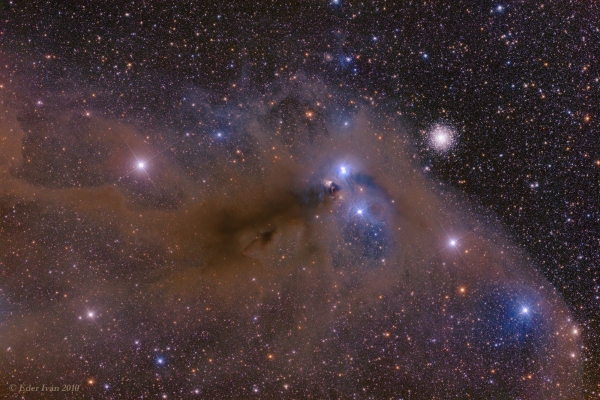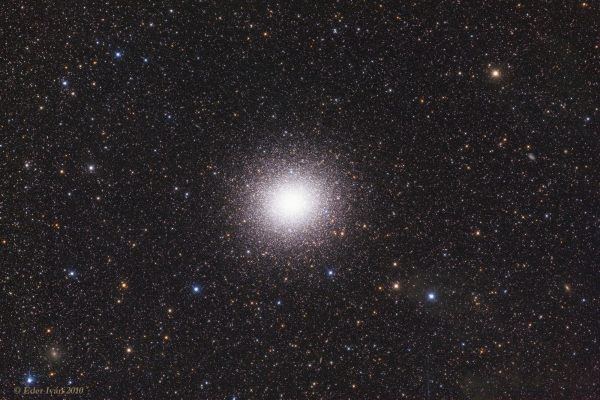47 Tuc globular cluster
near the Small Magellanic Cloud in Tucana
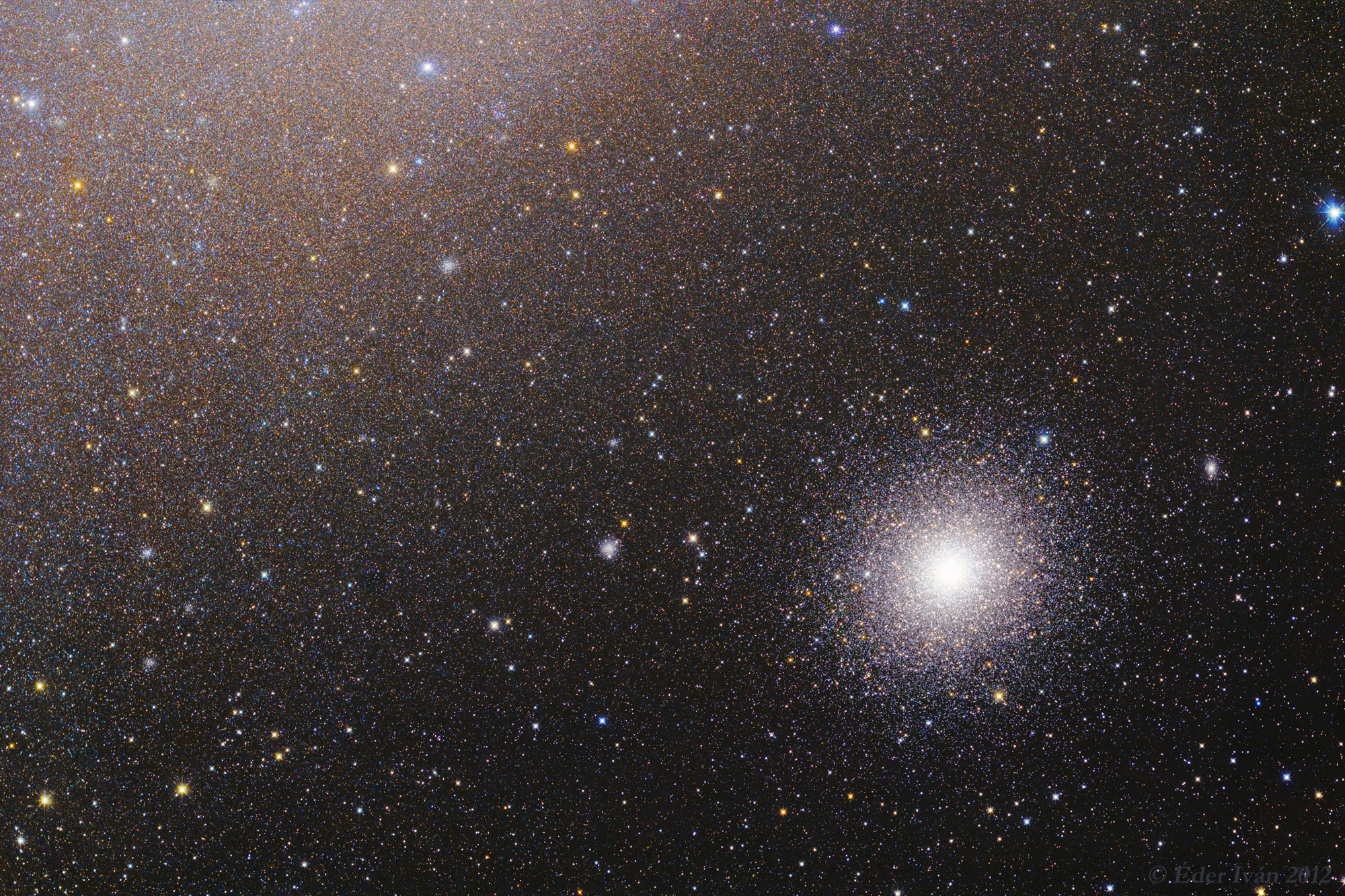
Globular star cluster 47 Tucanae is a jewel of the southern sky. Also known as NGC 104, it roams the halo of our Milky Way Galaxy along with around 200 other globular star clusters. The second brightest globular cluster (after Omega Centauri) as seen from planet Earth, it lies about 13,000 light-years away and can be spotted naked-eye near the Small Magellanic Cloud (SMC) in the constellation of the Tucan. Of course, the SMC is some 210,000 light-years distant, a satellite galaxy of our Milky Way and not physically close to 47 Tuc. Stars on the outskirts of the SMC are seen at the upper left of this broad southern skyscape. Toward the lower right with about the same apparent diameter as a Full Moon, dense cluster 47 Tuc is made up of several million stars in a volume only about 120 light-years across. Away from the bright cluster core, the red giants of 47 Tuc are easy to pick out as yellowish tinted stars. Globular cluster 47 Tuc is also home to exotic x-ray binary star systems. (Text adapted from APOD)
Below you can see crops of many star clusters belong to SMC:
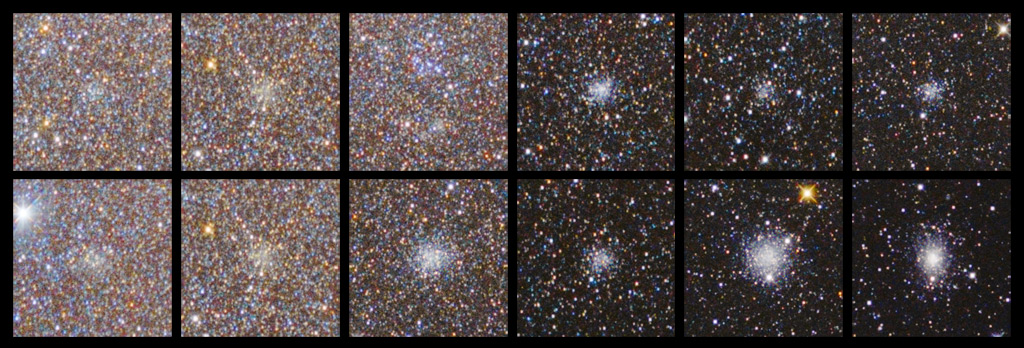
Image details
- Instrument:
- 200/750 Newton, 3" Wynne (710mm effective focal length)
- Camera:
- Home-modified Canon EOS 5DmkII
- Mount:
- SkyWatcher EQ6 + Boxdörfer DynoStar
- Guiding:
- 9x50mm SkyWatcher finder scope (50/180mm), Lacerta-MGen autoguider
- Exposure time, filters:
- 24x2,5 perc (1 óra összesen), ISO 1600
- Location, date:
- Hakos astrofarm, Namibia (1835m); 2010.05.10.
- Observing conditions:
- Transparency: 9/10, Seeing: 8/10, Temperature: +10°C
- Processing:
- ImagesPlus, Registar, Photoshop


